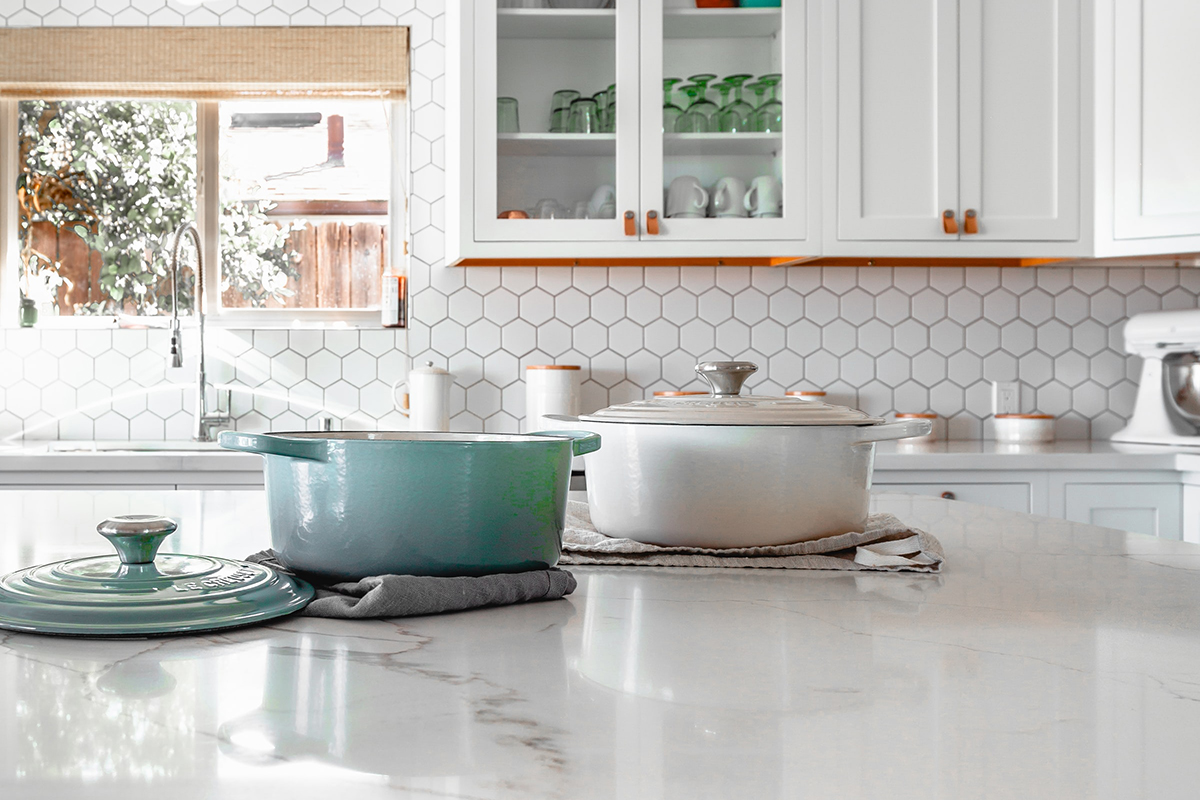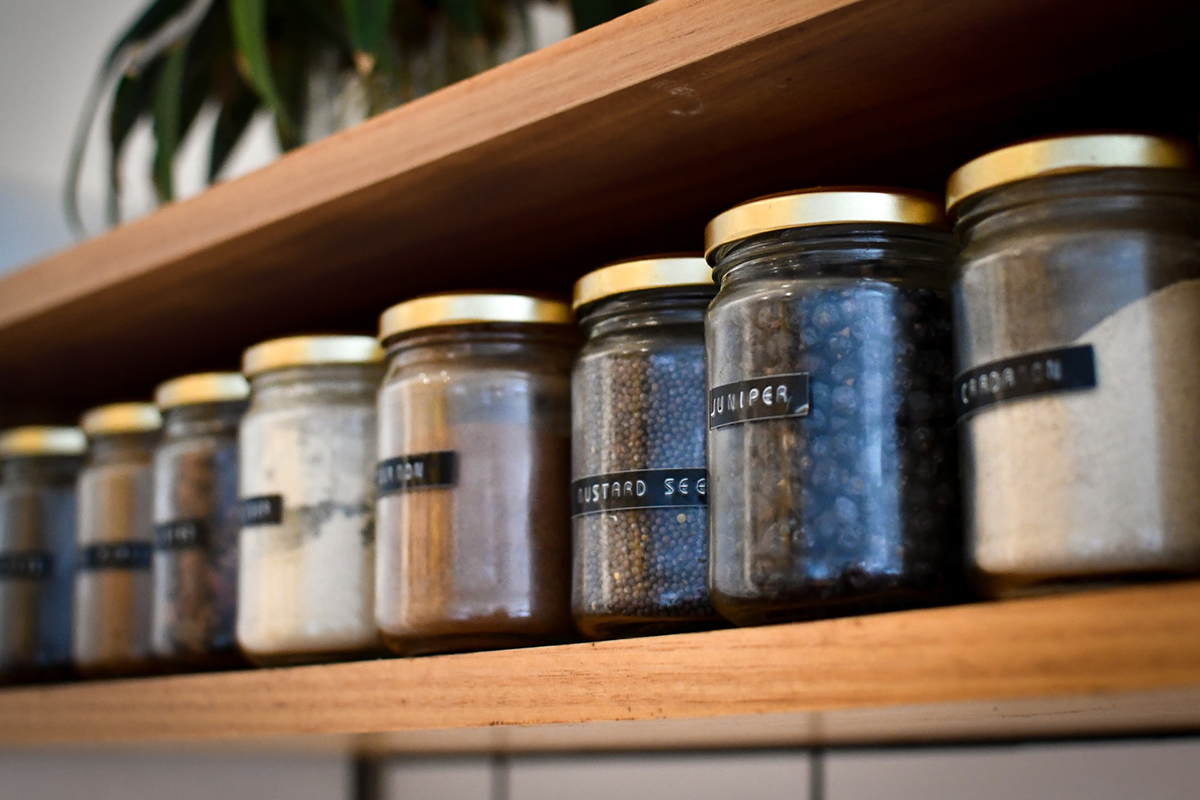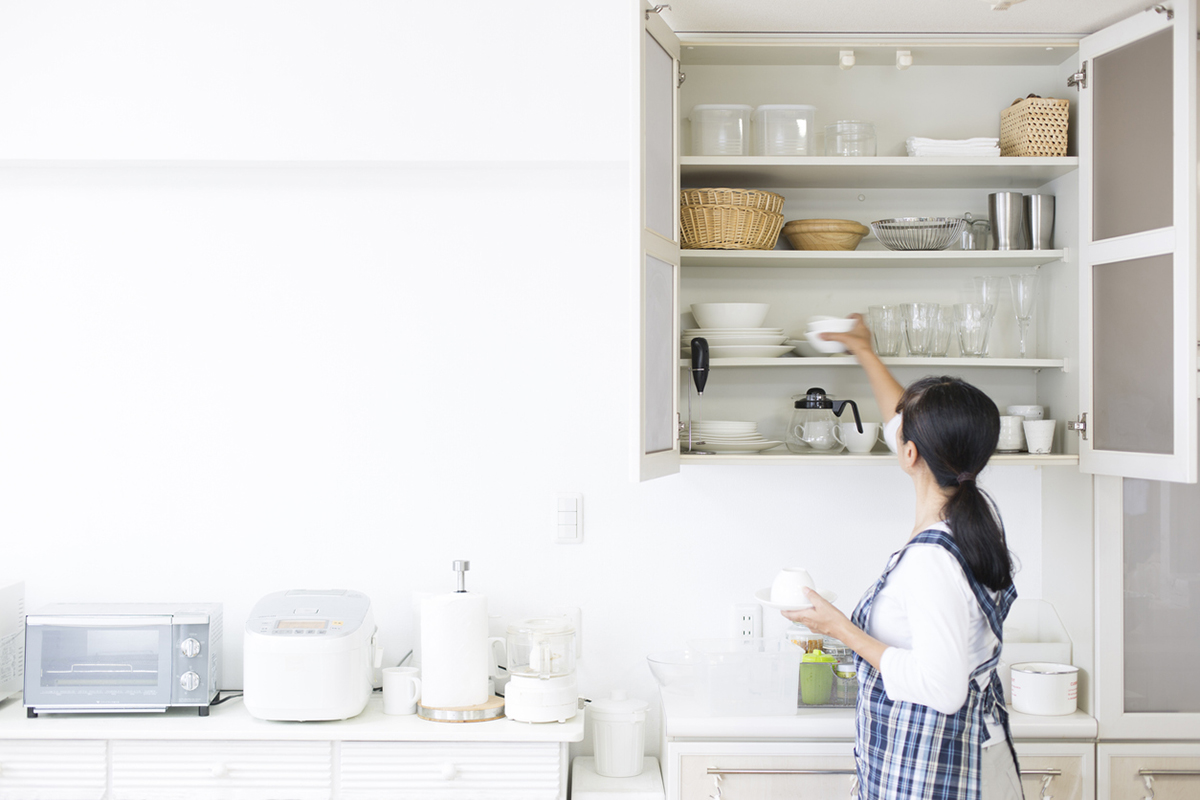Messy kitchen cabinets are almost a given in modern households, but they don’t have to be. Whether you keep finding duplicates of the same spices or your pots and pans are awkwardly tumbling out every time you open the door, these tips and ideas will get your kitchen organised in no time.
Take out everything
The first step to efficient organising is to start with a blank canvas. This means emptying out your cabinets to get a clear overview of everything you own and assess the extent of your storage space. If you pick up any spoiled items in the process, throw them away there and then. This saves you time when decluttering later on.
Have some extra time on your hands? Wipe down the empty cabinets with a damp cloth—this will save you the trouble of cleaning around all the clutter next time.
Create categories

Image courtesy of Roam in Color/Unsplash
Once everything is laid out, start by grouping items together. How you choose to go about this depends on your personal lifestyle. If you do a lot of cooking, for instance, you likely have stacks of ingredients and need to categorise these appropriately. Some popular food groupings include carbs (pasta and rice), sauces, spices, drinks and snacks.
Other groupings will include non-consumable items, such as pots and pans, plates and bowls, glasses, mugs and cooking utensils. Cleaning supplies, dish towels and appliances should be kept in their own, separate groups.
Creating these categories will allow you to see at a glance if you have any superfluous clutter, such as duplicate ladles or cutting boards that haven’t been used in years. Slowly go through all of the items, then discard what you don’t need, either for donating or trashing.
Follow these storage rules

Image courtesy of Heather McKean/Unsplash
No matter how well you’ve categorised and decluttered, the actual storing and organising can be a daunting task. While the way you go about it is ultimately up to you, there are some golden rules you can follow to minimise the effort. As always, pick and choose the ideas that work for your own lifestyle!
- Keep items close: The most important rule is to keep your kitchen items close to where you use them. Pots and pans near the oven, plates near the drying rack or dishwasher, tea near the kettle, etc.
- Prioritise daily use: The items you reach for the most should be right at the front, while fancy dinnerware can be stowed away at the back of top cabinets for special occasions.
- Remove the superfluous: Items you haven’t used in years shouldn’t be in your kitchen at all; move them to the storeroom or donate them.
- Use the countertops: If you tend to make coffee in the morning, there’s no point in storing the coffee machine inside a cabinet and lugging it out every day; just leave it on the countertop instead.
- Aim for visibility: Everything inside your cabinets should be visible at a glance. This not only looks much nicer but also prevents you from losing track of what you own and accidentally buying duplicates.
- Create labels: Label anything that’s not immediately recognisable, such as jars with dried goods and sauces. You can even label the lids of spices and other containers if the fronts are hidden by other items.
- Remember the weight: Always store heavy items at the bottom. This is to avoid injuries when taking things out of the top cabinets and to protect the cabinets themselves from getting damaged by the weight over time.
- Minimise risks: Leave the cabinet under the sink for cleaning supplies. This area may suffer from water leaks and get mouldy—and you don’t want your food and dinnerware anywhere near that. If you have kids or pets, make sure to childproof the cabinet.
Maximise your space
Most of the time, all it takes to get organised is better use of space. For instance, have you checked if the shelves inside your cabinets can be moved? If you can shift the shelves around, this can make for a great advantage when storing items of different heights.
The second fool-proof way to maximise the space you already have is to stack everything that’s stackable. Stack your pots and pans, stack lids, stack food containers, stack cups and stack cutting boards.
Make it easy to maintain

There’s nothing more frustrating than organising the whole kitchen just to find it messy again the next day. To avoid this, give the whole family a tour of the space and explain how you’ve organised things and why. This will help them understand and stick to your method.
If you have a particularly messy household, tell them to leave things out on the counter so you can put them away yourself—it’s extra work, but less annoying than finding things in the wrong place.
Remember the golden rule of labelling jars and containers? To keep things simple and organised in the long run, always leave the kitchen with all the labels facing out front so they can be instantly spotted the next time.
Looking for more? Check out the best cabinet organisers for a tip-top tidy kitchen!



